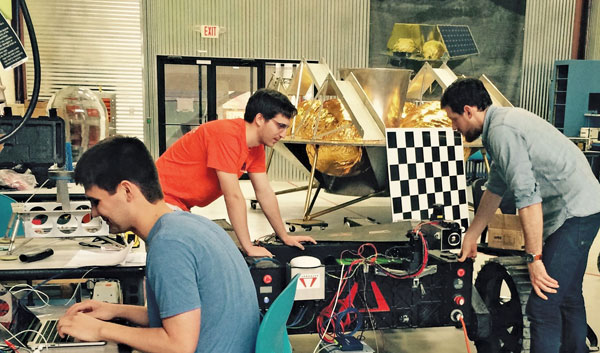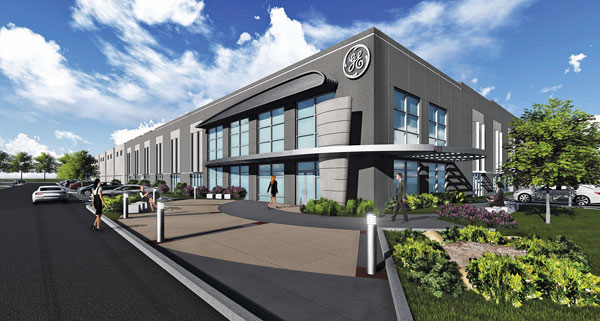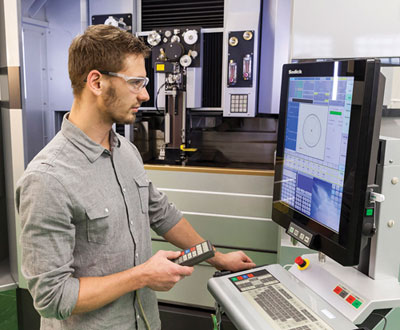In the Pittsburgh region, what’s old has become new again.
Nineteenth-century business magnates like Andrew Carnegie, Henry John Heinz, Henry Clay Frick and George Westinghouse first put Pittsburgh on the world map as a place that makes things.
Their investments in southwestern Pennsylvania from a bygone era are still economic drivers and continue to attract manufacturing investment, alongside investments in advanced materials, additive manufacturing, robotics, renewable energy and other technology-driven industries, which complement and advance the region’s 200-plus year history in fabrication. Reinforcing all of this is a culture of collaboration and innovation that is a hallmark of the Pittsburgh region.
“We are a diverse region of 10 counties, each with its own assets and challenges, but one thing we pride ourselves on is that we work together,” says David Ruppersberger, president of the Pittsburgh Regional Alliance, the region’s economic development marketing organization and an affiliate of the Allegheny Conference on Community Development, one of the U.S.’s premier public-private partnership organizations. “Manufacturing has been the economic sector — for six of the past eight years of the PRA’s tracking — that routinely is the most active for attracting investment deals. It is very much the core of what the region does.”
That core is getting stronger each day, as a regional economy built on the skill and dedication of workers at U.S. Steel, ATI, Alcoa, Westinghouse and other industry giants adds to its arsenal the success of home-grown startups. Companies like Astrobotic, Aquion, SolePower, Optimus Technologies, WindStax Wind Power Systems and ALung Technologies may not be household names right now, but they’re already emerging as game-changers.
“Our colleges and universities produce 36,000 graduates a year,” says Ruppersberger. “We produce talent, and we retain more of that talent every year. Our workforce is a differentiator.”
Around the 2.6-million-resident area, employers who call southwestern Pennsylvania home tell Site Selection that the region’s skilled workforce is a leading reason why their companies continue to thrive.
Pittsburgh Offers Global Link
Bob O’Brien, executive vice president and chief operating officer of Calgon Carbon, is one of those employers who’s quite happy to call the Pittsburgh region home. In fact, after moving 250 employees into a brand-new headquarters building in Moon Township, near Pittsburgh International Airport, O’Brien says that access to qualified personnel trumped all other site selection factors for the $555-million company.
“We were in two buildings and our lease was expiring on those properties,” O’Brien notes. “We wanted to upgrade the quality of our facilities. We are a small to mid-sized company, and we wanted to recruit good people right out of college. We have a history of doing business here, and we can coordinate our global operations in Europe and Japan very efficiently with an East Coast headquarters.”
Based in the Pittsburgh area since the 1940s, Calgon Carbon is an advanced materials company that makes military gas masks, purifies water and removes mercury from power plant flue gas. The firm moved into its new headquarters in February 2015 from a location 1.5 miles away.

“We have been making activated carbon for military gas masks since the 1940s,” says O’Brien. “We developed alternative ways to make an activated carbon from bituminous coal. Today, we are the only provider of gas masks to the US military. We have two plants on Neville Island in the Pittsburgh area where we reactivate the carbon that we produce in Kentucky and Mississippi. We operate 11 reactivation facilities around the world, and we are investing $30 million into a major renewal project at our 95,000-sq.-ft. manufacturing plant on Neville Island. We like that facility because it is an industrial area and it gives us room to grow. Transportation is a big cost of reactivation, and from Pittsburgh we can serve our clients on the East Coast, in Canada, and in the Midwest and South.”
Calgon Carbon does things in Pittsburgh that it could not do anywhere else, notes O’Brien — things like making ultraviolet-light equipment for treating ballast water on cargo ships. “The wealth of talent from area engineering schools really drives our success,” he says. “We pull from Pitt, Penn State, CMU [Carnegie Mellon University] and Robert Morris. We find that people from Pittsburgh want to stay in Pittsburgh, and people who moved away from Pittsburgh want to come back.”
O’Brien says that employees like the new headquarters location because it is only 10 minutes from the airport, 11 miles from downtown Pittsburgh, and close to a bevy of quality-of-life amenities like shopping, restaurants, other retail services and great highways.
“Our motto is ‘Pure Water, Clean Air, Better World,’ and we are delivering all of that from right here in Pittsburgh,” notes O’Brien.
Talent is Region’s Calling Card
At Mitsubishi Electric Power Products Inc. (MEPPI) in Warrendale — a suburb about 30 minutes north of downtown Pittsburgh — President and CEO Brian Heery says the Pittsburgh-area location enables his firm to hire the best and brightest electrical engineers in the U.S.
“This area is rich in basic talent,” says Heery. “We offer interesting work, and we have been experiencing growth the past 10 years. Our retention rate is very high, even for our industry. We are able to find skilled people here, and it is a great workforce. We have 700 people in Warrendale.”
Heery adds that “we are a good match politically and economically with Pittsburgh. This company combines the best of the Japanese and American business cultures, and the region is the best representation of US business culture. The people are incredibly stable here, and their work ethic is exemplary. Plus, the people here are just really nice.”
A robust infrastructure of second- and third-tier suppliers allows MEPPI to focus on what it does best: building high-performance transformers and circuit breakers for large electric utility companies, as well as power plants and air conditioners for trains.

“This area produces the welders, galvanizers, machinists, painters and other skilled craftsmen and tradesmen that we need in order to remain globally competitive,” says Heery. “Any part we need can be made within 60 miles of here. Japanese corporations tend to take a long view, and it is obvious that they like what they see in the Pittsburgh region.”
Calum Munro, global technical director for industrial coatings at PPG Industries, agrees. “We have a new CEO who is driving a very strong message through the organization of driving growth with our customer partners, and avoiding complacency,” he says. “My world is all about change. The markets we serve are anything but static. As a result, we have quite a diverse and evolving portfolio.”
The nearly 135-year-old Fortune 500 company — headquartered in Pittsburgh but with operations in several counties of the region — is the world’s leading coatings company, providing paints and protective coatings for automobiles, aircraft, ships and other vehicles; specialty coatings and materials for electronics; architectural paints for homes and other structures; corrosion protection for infrastructure; and other advanced materials.
Around 650 of the firm’s workers in Pittsburgh are engaged in research and development projects that touch PPG’s global supply chain. “Our portfolio has diversified from our origins in glass. We have been an advanced-materials company since the 1940s, and now focus our materials solutions are coatings that beautify, protect and add function,” Munro says. “A number of universities and strong academic base in the region allow us to readily engage the chemists, engineers, material scientists and physicists we need to be a world leader in our industry. Plus, the community leaders here are big champions of industry. Those types of partnerships enable PPG to thrive.”
Calgon Carbon, MEPPI and PPG are far from alone. Manufacturing in the Pittsburgh region comprises 3,000 companies employing almost 100,000 workers. It is the second largest contributor to gross regional product (about 10 percent).
A Diversified Powerhouse
Alcoa, ATI, Covestro (formerly Bayer MaterialScience), Eaton Corp., Industrial Scientific, Kennametal, LANXESS, U.S. Steel and Westinghouse Electric Company have major operations based in southwestern Pennsylvania. All of these companies chose to remain in the region after the downturn in the steel and coal industries in the late 1970s and early 1980s. They did so because of a strategically engineered environmental cleanup that did not cripple the Steel City’s vital industrial base.
The region’s legacy as a center for specialty metals — particularly in steel and aluminum — has resulted in advanced capabilities in primary metals, metals fabrication and precision manufacturing, trades that are highly associated with advanced materials and integrated electronics. The region’s specialty metals prowess earned a seal of approval from the federal government earlier this year when the greater region was announced as one of 12 new “manufacturing communities” that are part of the U.S. Department of Commerce’s Investing in Manufacturing Community Partnership (IMCP), an Obama Administration initiative.

- Dr. Mark Haley, president of Hormann Flexon LLC, manufacturer of high-end, custom-made doors for large commercial clients, in Burgettstown, Pa.: “This is an appealing manufacturing environment. Costs are competitive here. We pay good wages, but our taxes, insurance and workers compensation costs are all fairly low. There is an available workforce here, and the cost of that workforce is affordable for German companies like ours. We plan to keep on growing in the Pittsburgh region.”
- Pete DeComo, chairman and CEO of Pittsburgh’s ALung Technologies Inc., manufacturer of a cutting-edge respiratory assist system: “Our success would not have been possible without the support infrastructure for life sciences startup companies in the region.
Since 2000, life sciences companies in Pittsburgh have grown from a handful to over 400 companies. These are firms that didn’t even exist 15 years ago. We are strikingly more advanced today. It is our hope that one day we will be the next Minneapolis or Research Triangle Park.” - Dave Rugaber of Oberg Industries of Freeport, Pa.: “The best location attributes here include quality of life, access to both urban and rural areas, and the workforce. Our people are our biggest asset. We have 750 employees doing precision machining, and we have been doing it for 65 years right here southwestern Pennsylvania. We just announced an 80,000-sq.-ft. expansion of our plant in Freeport, so we plan to grow.”
Energy also powers the manufacturing base in Pittsburgh. Petrochemical opportunities abound because of wet gas feedstock in the Marcellus and Utica shale gas plays in a tri-state region with Pittsburgh at the center. The Marcellus Shale alone contains 141 trillion cubic feet of recoverable natural gas — estimated to span 20 to 30 years of drilling and 50 to 60 years of production.
According to the federal Energy Information Administration, industrial gas consumption in 2016 is expected to be 33 percent greater than it was in 2009. Manufacturers who rely heavily on natural gas as a feedstock are increasingly choosing to locate or expand in the area, where ample natural gas is a low-cost energy source.
If an ethane cracker lands in the region, an investment decision about which economic developers in the area remain confident, plastics makers are sure to follow. The lower energy costs for operations will attract these firms, which already number more than 100 in the area.
Large employers aren’t the only ones benefiting from these assets and advances, however. Region-wide, innovative startups and smaller manufacturing firms are making game-changing discoveries and designing and building products and systems of their own in fields as diverse as robotics and alternative energy.
Astrobotic, founded in 2007 as a CMU spinoff by the “father of field robotics” Red Whittaker — and a contender for the prestigious Google LunarXPRIZE — is a lunar logistics company that bills itself as a sort of “FedEx to the moon.” The Pittsburgh firm is developing a rover vehicle that will deliver payloads to the moon for paying private and public customers such as the national space agency of Mexico.
Jackie Erickson, director of communications for Astrobotic, says, “The talent here is incredible. A majority of our staff came from CMU. It has one of the top computer science programs in the world. In fact, the top computer science graduate from CMU is working for us. We are doing all of the work necessary for this mission — which is developing and building the first autonomous vehicle to travel on the moon’s surface — within 100 miles of Pittsburgh. My grandfather rolled steel for the Apollo 13 mission right here in Pittsburgh, and 40 years later I get to work on a lunar rover.”
Ron Gdovic, founder and CEO of WindStax Wind Power Systems, which makes small wind turbines and micro-grids in Pittsburgh, says his education and research work at Pitt and CMU propelled him to a career as an entrepreneur. “I looked at doing this in Wyoming, the Midwest, New York or Florida, but we are a manufacturing entity and operating in a facility that was birthplace of Alcoa, located near Andrew Carnegie’s first shop,” he says. “Pittsburgh beckoned.”
This Investment Profile was prepared under the auspices of the Pittsburgh Regional Alliance. For more information, contact the Pittsburgh Regional Alliance, info@pittsburghregion.org / 1 (877) 392-1300 / outside of U.S. and Canada, +1 (412) 392-1000. On the Web, go to www.pittsburghregion.org.

